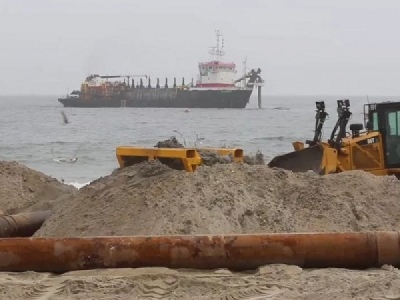
Posted on July 3, 2018
By Russ Zimmer and Jean Mikle, app
The Jersey Shore’s beaches — treasured by locals and the reason why tourists spend billions of dollars here every summer — have never been fuller, according to a new research by Stockton University.
The findings mark a key benchmark in the recovery from superstorm Sandy, which reconfigured the coastline when it rushed ashore in October 2012.
“The challenge now is to meet expectations for the future,” said David Rosenblatt, assistant commissioner for Engineering and Construction at the New Jersey Department of Environmental Protection, in a statement from Stockton. “We will also be focused more on the back bay and how to address concerns there.”
However, maintaining copacetic beaches hasn’t been cheap: Almost 163 million cubic yards of sand has been pumped onto New Jersey beaches at a cost of more than $1.2 billion in tax dollars. Nearly all of that has come since the 1980s.
That work continues today.
A 14-mile dune project — one of the most ambitious undertakings in the history of the U.S. Army Corps of Engineers — is in progress in northern Ocean County.
“Since Hurricane Sandy, this work has been nonstop,” said Keith Watson, project manager for the Army Corps’ Philadelphia District, in a statement. “We have dredged, pumped or placed more than 40 million cubic yards of sand onto the beaches from Mantoloking to Cape May Point … that’s enough sand to fill Lincoln Financial Field approximately eight times,” referring to the home stadium of the Philadelphia Eagles.
Monmouth and Ocean counties have received the lion’s share of the funding.
But more sand has been shifted to Cape May County than anywhere else in New Jersey.
Replenishment work in Toms River’s Ortley Beach section is expected to start within the next week. The timing is not optimal: the beach work will start during the busiest part of the tourist season, and is expected to last until October.
While some residents have grumbled about the timing, no one has questioned the need for the work. Almost every one of the 2,600 homes in Ortley Beach were either destroyed or damaged by superstorm Sandy in 2012.
The township recently agreed to accept beach badges from Toms River’s private beach associations at the Ortley Beach public beach during the beach work. Work on the private beach areas is expected to start next month and continue through September.
“We want to keep our summer tourism going through this project,” Councilwoman Maria Maruca said.
The Shore’s beaches are the centerpiece of the local tourism economy, which injects more than $20 billion combined into the economies of Atlantic, Cape May, Monmouth and Ocean counties every year.
But the beaches also provide protection against storm surge from coastal storms. As the first line of defense, a wider beach and a comprehensive dune system can go along way toward protection people and property from the next hurricane or nor’easter.
Four snowy coastal storms ripped past New Jersey during consecutive weeks in March, causing more beach erosion combined than all but four individual storms since 1980, according to Jon Miller, a coastal processes specialist at Stevens Institute of Technology.
But the sand lost during the “four-easter,” as it was branded on social media, didn’t travel very far offshore and should be naturally restored to the beach before the end of July, Miller said during a news conference before Memorial Day weekend.
Source: app





